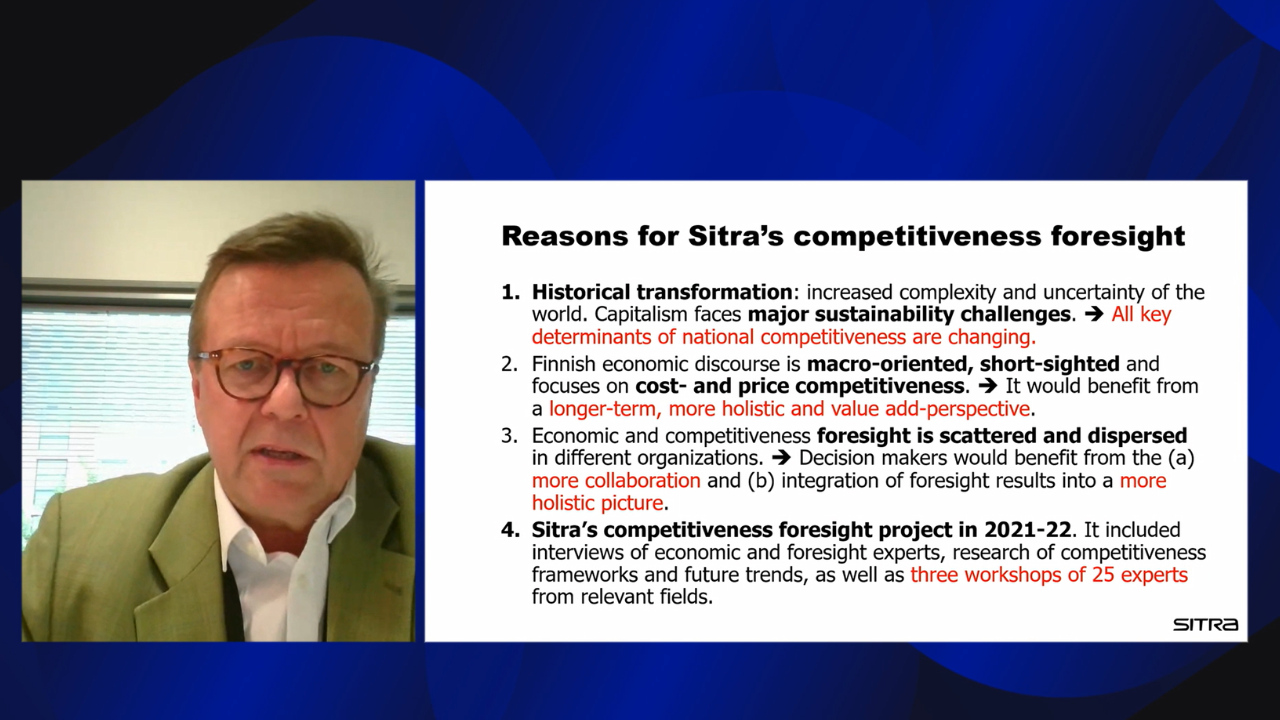The Future of Economic Competitiveness

The second year of economic recession has brought the issue of the long-term competitiveness of the Estonian economy and the changes necessary to strengthen it into sharp focus. Estonia’s earlier competitive edge has been undermined by the rapidly changing global economy. We need to cultivate a common understanding of what the unique and sustainable competitive advantages are that the Estonian economy can successfully rely on, including in the more distant future.
In 2016, the economic development working group convened by Prime Minister Taavi Rõivas called on the government to “act more ambitiously on economic growth and critically assess the functioning of its current foundations, as competitive advantages are not permanent in the rapidly changing global economy and countries make constant effort to innovate them through various structural reforms.” At a time when the world is changing faster than ever before, it is critical for every country to keep evaluating its global position and competitiveness.
The report of Varblane et al. points out that Estonia’s current narrative on its competitiveness is largely related to information technology, but this alone cannot provide a solution to securing employment for all of Estonia. An informed discussion on Estonia’s strategic choices is needed.
Being strategic and adaptable are the most important characteristics of Estonia as a small country. It means the ability to do the same things better by knowing and skilfully using the experiences of other countries. It requires strategic efficiency, i.e. the ability to create a unique and sustainable competitive edge. While Estonia cannot change its geographical location, it can change its strategic position relative to other countries. We can influence how our location would work for different global business models with our strategies and policies.
As the fight against climate change is becoming more urgent, the importance of restructuring the economy is increasing. Among other things, the smart application of biological resources and green energy could take a more prominent place in Estonia’s image than before. A strategic approach is required for the green economy and the use of Estonia’s natural resources. Various economic associations have argued that Estonia has not adequately addressed the green transition as an economic concern, with the climate perspective dominating discussions.
An important area of economic policy is sectoral policy, or structural policy. One of the most important goals and strategic choices of sectoral policy is to support market processes. A positive structural change in the economy accelerates economic growth, although we must consider that less productive sectors can shrink faster in such a situation, as resources are redistributed. This leads to negative results, expressed in high adaptation costs. Due to this, one of the main tasks of sectoral policy is to minimise adaptation costs. (Varblane et al. 2024)
Considering the above, the following key questions are posed in the research of the future of economic competitiveness:
- What are the long-term trends that characterise different aspects of productivity in the Estonian economy?
- What could the competitive advantages of the Estonian economy be in 15−20 years’ time?
- How can we develop these competitive advantages?
- What is the investment required for the development of new competitive advantages?
The work will be carried out within the framework of the competitiveness expert group established at the Economic Affairs Committee of the Riigikogu. The research direction has a strong connection with the previous research directions of the Foresight Centre, especially those of productivity, regional economy and the green transition.
News linked to the research
-
11.10 2024Three energy-intensive industries with the greatest potential for Estonia
According to the new report by the Foresight Centre, attracting industries with high energy consumption to Estonia requires the added value of the projects per unit of energy to not be lower than the average. Establishing energy-intensive industries would only be justified if they could bring opportunities for economic activities that would create more added value in Estonia.

 An independent think tank at the Riigikogu
An independent think tank at the Riigikogu 
